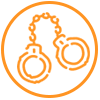Categories
Interview – Madhu Mehra Part I, In Plainspeak
In this issue of In Plainspeak, we interview Madhu Mehra, lawyer and feminist activist. She is a founding member and the Executive Director of Partners for Law in Development (PLD), a legal resource group on women’s rights. Her activism, work, and writings over 29 years cover issues relating to gender, sexuality, identity politics, violence against women, access to justice and the law. She has consistently pushed for decriminalisation of consensual sexuality – homosexuality, adultery, and adolescent sexuality. Madhu is a leading expert on CEDAW, the UN treaty on women’s equality, having written extensively, conducted trainings and provided technical assistance to both civil society and governments. She engages with several UN Human Rights mechanisms and processes to advance implementation of women’s rights, and notably, researched and drafted the review of 15 years of the mandate of the UN Special Rapporteur on Violence Against Women (1994-2009) for the Office of the United Nations High Commissioner for Human Rights (OHCHR). Our sincere thanks to Madhu for taking time out to share her observations, work and experiences on the connections between power and issues of sexuality.
Shikha Aleya (SA): Madhu, please begin by telling us a little bit about yourself. As a lawyer, what were the reasons that led you to do the kind of work PLD does, and what have been the major milestones in PLD’s journey?
Madhu Mehra (MM): I began as a litigating lawyer, but soon realised the limitations of this, in connecting me with the main sites of social change. With legal training and practice geared primarily to litigation at the time, there was no given pathway to follow, so when a few of us started PLD, it was an exploratory initiative to understand how law might work in community action. The first programme rolled out from 1998-2002 was to forge partnerships between community groups in different parts of the country, working on themes as diverse as violence against women, land rights, natural resources, child rights – with local lawyers. The mandate of these partnerships was to plan and implement non-litigation field-based strategies involving law,that would develop and in some cases, enhance rights-based framing of the work of the community group. For women’s groups, we helped build systems for case in-take and documentation, integrated due process in their alternative dispute resolution systems, built skills in drafting FIRs and undertakings. For natural resource/environment organisations, the focus was to identify gender dimensions within their work, and plan interventions to address these. This was a significant learning phase continuing over nearly six years, and it paved the way for PLD’s future programmatic focus on women’s rights, sharpening over the second phase into women’s rights from the lens of gender and sexuality.
The partnerships phase pointed to a need for a robust focus on women’s rights, to be able to address perspective and capacities of change agents, community organisations and lawyers; and the need for data collection to understand how the law works ground up, to develop a nuanced understanding of protection gaps in law. This was the starting point for action research, production of knowledge and resources. In this second phase, PLD engaged with women’s organisations across the country on themes relevant to areas of action research to be undertaken, while simultaneously carrying out capacity development workshops. This led to studies on the targeting of women as witches across several states; mapping of protection gaps to women in de facto conjugal relationships; and mapping ways by which progressive/feminist initiatives across South Asia negotiated and re-defined cultural and customary norms to secure women’s rights.
PLD joined with other like-minded organisations to form Voices Against 377, to collectively demand for decriminalisation of homosexuality. The work done through this period led to a greater organisational consciousness of the importance of gender and sexuality as a lens through which to understand stigma, marginalisation, denial of legal protection and sometimes, criminalisation. We were also part of renewed efforts by the women’s movement to campaign for reform in laws relating to sexual assault, eventually leading to the Criminal Law Amendments in 2013.
The emphasis on gender and sexuality came to be explicitly articulated within the third phase of work. Starting from 2010, to deepen in the aftermath of the 2013 amendments, this was partly in response to the predominant focus on sexual violence in activism/law reform, contrasted with inadequate efforts around sexuality, and its linkages to sexual violence. The substantial law reforms expanded the scope of sexual wrongs against women, while not doing anything significant to displace criminalisation of consensual sex between same sex and trans partners, or by adult women outside of marriage, or sex workers. In fact, the changes in 2012-13 also introduced an increase in the age of sexual consent from 16 to 18 years. The high sentencing structure introduced for rape in 2013 (higher than what was prescribed for child sexual offences in 2012) and the taking away of judicial discretion to award less than minimum sentences, was a troubling sign of how only the vocabulary of sexual violence, victimhood and calls for stringent punishments could gain traction in policy and public discourse.
PLD approaches women’s equality through the lens of gender and sexuality – and all our current work is informed by it. This helps bring out the linkages of sexuality with sexual violence, to encourage more change agents to grapple with sexual hierarchies, stigma and prejudice (including in themselves) – and simultaneously contribute towards building a sex positive culture which is also essential to prevention and redress of sexual violence.
SA: So, a large component of PLD’s work involves creating knowledge resources, such as the book you’ve authored, The Rape Law and Constructions of Sexuality. A crucial point you present in this document focuses on what you have referred to as the State’s approach to female sexuality. You have explained that as per the existing legal provisions, “Adultery is a ground for divorce for either spouse under the marriage laws, therefore making it a civil wrong between two persons. Yet, when committed by the wife, it is treated as a crime!” You have mapped large territories of power inequality and injustice in this book. What strategies need to be adopted, and by whom, to acknowledge and address these rights violations that appear actually to be built into the laws?
MM: So essentially I juxtapose different pieces of penal law which seem unconnected, and rarely discussed together – to bring out the larger legislative scheme that constructs sexuality as legitimate or illegitimate,that is to say, sets out hierarchies of what is acceptable and unacceptable, rather than establish universal principles that define sexual rights and bodily integrity. I make linkages between the historical origins of rape law, rooted in notions of trespass over property of the male guardian, who controls the daughter’s virginity and the wife’s chastity. The rape law traditionally sought to protect this right of the male guardian, without distinguishing between willful elopement and abduction of the girl. The reading and interpretation of the law in judgments resonate closely with this view – where rape trials focus mostly on the victim’s morality to come to a finding of whether or not she could have been violated. The adultery law dovetails with this value system – by assigning the husband the right to control his wife’s sexuality. This control over female sexuality by the husband upon marriage is integral to the reproduction of caste, as it is through marriage that both purity of lineage and caste are perpetuated. So this selective criminalisation of adultery by wife – is a way by which modern law allows State machinery to be used to punish transgressions that disturb heteropatriarchy and caste.
Although the definition of affirmative consent introduced in the penal code in 2013, creates assumptions that the law has moved away from notions of chastity to protection of bodily integrity, in reality this may not be true. Little remains disturbed in the larger scheme of the law in relation to sexual consent. In fact, adolescent sexuality was criminalised in the spate of 2012-13 law reforms. I believe this status quo is partly an outcome of an over-reliance on criminalisation and punishment as the engine for social change, particularly in relation to women’s rights concerns.
It is time to now push for decriminalising consensual sex – between trans, same sex desiring persons, adolescents, and women – irrespective of their marital status, and of sex workers. It is also important to move away from the fixation on the law, which has only privileged lawyers and legalese. Many other lenses serve to better understand and broadbase an appreciation of sexuality. I believe we need to open up conversations among the communities, particularly the youth, to build self-awareness and agency in this regard, as we would in any other field of life, to eventually build a sex-positive culture.
SA: In the same resource book, you refer to the Maya Tyagi case saying, “This was the first articulation of rape as crime of power, unconnected with chastity, modesty or lust – in this case, of male power combined with the power of the uniform.” What are some of the implications of using this approach and lens of ‘crime of power’?
MM: While targeting of women through sexual violence is gendered, in some situations the power inequalities at play are magnified, and in fact, serve a purpose much larger than violating individual victims. Such situations of power, to restore community honour, or dominant caste status quo with Dalits and Tribals, or in cases of communal riots– here the use of sexual violence serves to not just hurt or discipline a victim at an individual level, but intends to humiliate and degrade the entire community, through the individual harmed. Sexual violence serves as a weapon of conflict – with enough evidence across societies. Similarly, power is magnified when someone is in custody of the police or prison system – whether inside the official premises or in their control. Maya Tyagi was stripped and paraded in full public view to degrade her – in retaliation against her husband for having the gumption to hit a police officer molesting his wife. The sexual violence inflicted had nothing to do with lust as judicial discourse commonly projects rape as – but everything to do with police power and brutality to punish her for having the temerity to challenge abuse of that power. This, like several other similar cases, shows how rape and sexual torture serves to put a group of people ‘in their place’.
Men are also sexually violated in such situations, and particularly in communal conflict it is a way of emasculating the men of the ‘other’ not just to establish status quo with the aggressor community, but also internally, to rob them of gender advantage within their own community. It is essentially a weapon of war between two patriarchies, which serves to trump one by decimating the other.
So in case of atrocities against Dalits and Tribals too – the power is manifested in two ways. One, in the selective picking of a vulnerable target which secures the aggressor from any adverse consequences or accountability. The second, is to pick on a Dalit or Tribal in retaliation for asserting their rights – often through use of excessive brutality against one or more individuals to ‘put them in place’, thereby signaling to others, the consequence of transgressing the caste hierarchy.
Source: http://www.tarshi.net





